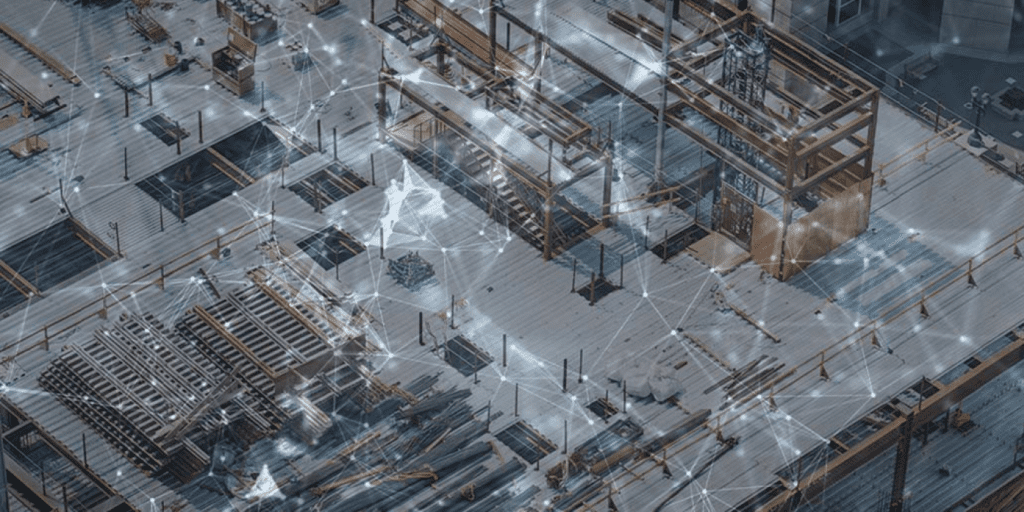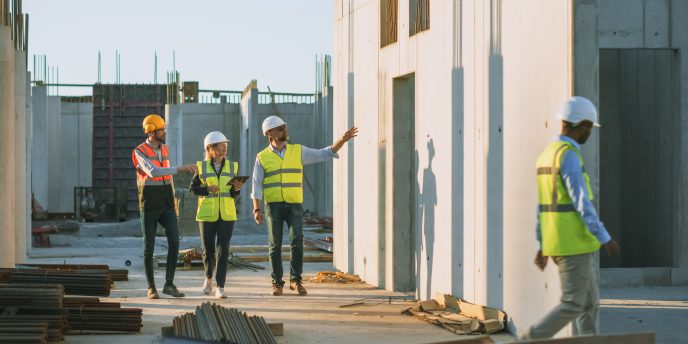

We probably take for granted the physical infrastructure that’s required to support the growth of the digital world, but The Cloud and data centers are synonymous, and the need for new data centers across the globe is highlighted in the CBRE Research Global Data Center Trends 2023.
“Large corporations are finding it increasingly difficult to find enough data center capacity,” it said. “Despite new data center developments, vacancy rates (the level of spare capacity in data centers) are declining in all four key regions (North America, Europe, Latin America and Asia).”
Construction, as with numerous other industries, took major steps in adopting digital technology across the sector during Covid-19, as project managers, project directors and many others had to quickly orientate themselves to overseeing sites without physically being able to visit. The pandemic changed the way we collaborate, as stand-alone, office-based servers became bottlenecks for access to data.

This new reliance on technology and growth in cloud services continued post-pandemic restrictions on movement and lockdowns were lifted. The industry now understands the need for standards in data collection, interoperability and use.
This allows highly accurate and easily sharable data to be generated on site and utilized across the data network and in various applications, be that contracts and stock, service and maintenance, site safety, site utilization, productivity, efficiency, sustainability and more.
Although sites may not have changed much physically over the past three years, the introduction of digital technology has certainly changed a site’s dynamic. An estimated $50 billion was invested in architecture, engineering and construction (AEC) tech start-up companies over the 2020-22 period, 85% higher than the previous three years, as reported by McKinsey & Company, in its article, ‘From start-up to scale-up: Accelerating growth in construction technology’.
We may be seeing quarterly peaks and troughs in construction starts, as well as various national reporting on the level of construction firms defaulting or even closing down. However, the global demand for long-term construction is resilient. This is certainly assisted by the government stimulus packages such as the $1.2 trillion Bipartisan Infrastructure Law in the United States and the €800bn Next Generation EU fund in Europe.
“An estimated $50 billion was invested in architecture, engineering and construction tech start-up companies over the 2020-22 period, 85% higher than the previous three years.”
Growth in construction tech companies targeting multiple use-case solutions addressing customer pain points is continuing, and this is being driven by customer demand for interoperability. This trend is either through virtual platforms built using open standards and workflows, such as openBIM, or with the proliferation of one stop-shop platforms. Nearly half the companies McKinsey analysed in its report offer solutions that address three or more construction use cases.
Across the industry, technology and IoT devices are communicating massive datasets across the cloud. This data can be analysed and used by people with remote access to check progress and advise on changes or updates without having to visit sites that may be many hours away.
Technology is changing the way we work, and this data may well be analyzed on servers in data centers in another state, country or continent, by AI-based applications on high-performance computers. The results are possibly then reviewed by a remote worker on a desktop or mobile device in another region.
Digital modelling enables remote collaboration and can eliminate siloed workflows and will highlight issues before work begins and money is spent. Construction tech, as in many other industries, has the capability to increase construction productivity and reduce scheduling overruns or eliminate rework among many other time and cost benefits.
Digitalization is reducing the need for paper trails across the industry for example, ordering and delivery of machines and tools from rental companies. OEM and third-party machine diagnostic systems analyze real-time operational data to predict equipment failure and then remotely contact the maintenance department with a service alert. All this can be done without paper, reducing time and the obvious errors that transcribing creates.
“Technology is changing the way we work, and this data may well be analyzed on servers in data centers in another state, country or continent, by AI-based applications on high-performance computers.”
Remotely available data is essential in construction, as by its nature the activity takes place away from an office environment. Furthermore, collaboration between multiple organizations is required on a daily, often hourly, basis and the managers and operatives on site need to be aware of the latest information. Communication is critical with many external contractors working and communicating with on-site and off-site teams and requiring access to the latest drawings or scheduling.
Using Software-as-a-Service, Cloud-based apps paired with industry focused analytic tools, users and construction companies are gaining meaningful insights from the data. Analyzing data from multiple projects is providing valuable trend information which companies are using to make informed decisions into the workflows that are most successful, and therefore, to channel resources into those areas.

Construction is a small slice of the $500 bn, 2022 public Cloud services market. The total industries SaaS utilization was the largest slice with around 45% of the total, according to IDC’s Worldwide Semi-annual Public Cloud Services Tracker. Construction industry organizations’ Infrastructure and Operations teams need to ensure that hastily deployed or inadequately implemented cloud architecture is fit for purpose, resilient and cost-effective to ensure that the cost of the cloud does not eat into the productivity gains won by taking their businesses digital.
The benefits of SaaS-based construction applications with global connectivity capabilities offers construction and associated organizations opportunities to share data, reduce data overheads, speed up site and systems analysis and improve overall productivity.
Rental and site technology are now based on GPS, wireless and Bluetooth-enabled systems, ensuring machines maintain high productivity, with less unscheduled technical intervention, and help improve site safety. The digitalization of construction has the potential to be an important factor in the future development of projects where achievable timeframes and realistic total project budgets are set.
Curious about what else is next for construction? Join us at Trackunit Next 2024, an online conference where we invite thought leaders and industry experts to discuss the future of construction. Save your seat.
See how IrisX unifies your data, accelerates decisions, and helps your business move from downtime to opportunity.

